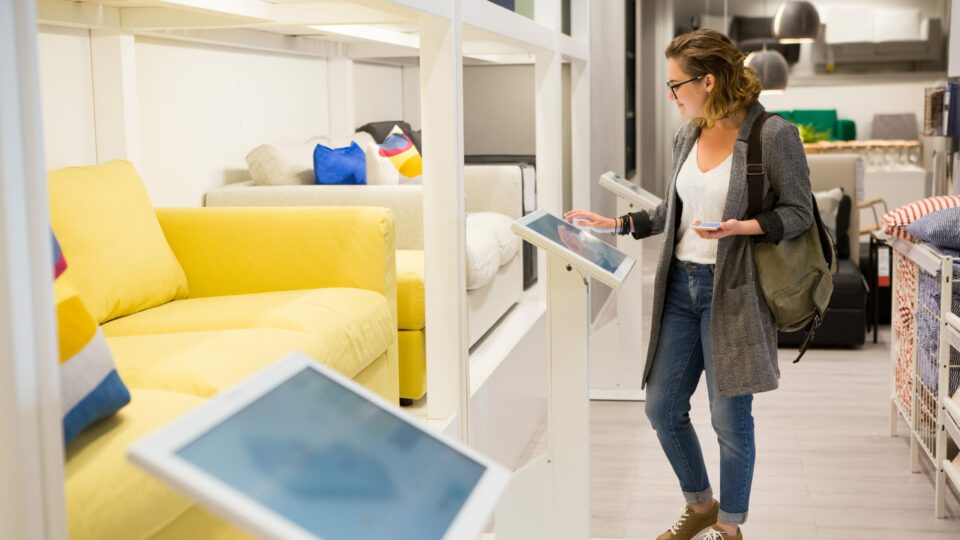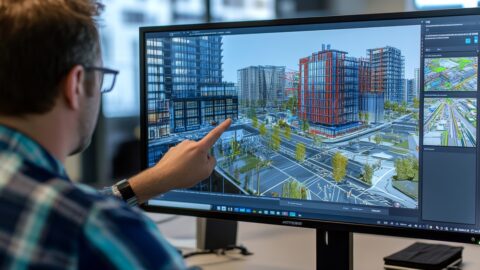Faced with an endless number of brands, product options and channels to shop through, consumers are looking for the perfect combination of “value” and “values.”
That is why Leslie Hand, Group Vice President of IDC Retail and Financial Insights believes that we, as consumers, go through all of our buying decisions asking a series of questions, including: Does this company have the product I want? Is it at the price point I’m willing to pay? Can I relate to this company? Is it a company that I love and does this company do things that I respect?
Particularly in a time of social, environmental, political and economic uncertainty, “the consumer really wants to grab onto the things that matter more,” Hand said in an interview with Retail TouchPoints. “For one product, the lowest price may be more important, but for another product, that may not be my driving force.”
But consumers aren’t just buying items online and having them shipped to the house. They’re embracing a true blending of digital and physical channels that allows them to touch and feel a product in the store, add it to their shopping lists, do more digging into how the product was sourced and developed, and then have it delivered later.
As a result, retailers are investing in the next era of experience, which Hand described in a recent report as “a continuum of multilayered, digital environments in which invisible streams of data — collected and analyzed by devices, sensors, and artificial intelligence (AI) — drive personalized experiences to enhance shopping for customers while optimizing operations for the retailer.”
These digital experiences, however, don’t always look digital to the shopper, according to the report. Some capabilities will be subtle, even invisible, and support unique shopping missions as they span across the physical and virtual worlds. Hand provides additional context to the report, which outlines the impact of:
- A robust, modernized infrastructure that helps connect customers, merchandise, stores and employees;
- Cloud-enabled data and AI platforms that collect and aggregate data across channels;
- Employee-facing technology that supports efficiency, performance and overall engagement;
- Smart shelves, which can deliver rich media content to consumers or allow them to scan a QR code to access more information; and
- NFTs and virtual experiences in the metaverse.
Retail TouchPoints (RTP): How have shifts in consumer behaviors and expectations impacted the way retailers invest in technology?
Leslie Hand: The flip switched [even before] COVID to now, and retailers understand they need to invest. In fact, 36% of retailers still tell us they’re planning to spend more [on technology] in 2022 than they did in 2021. Meanwhile, only 15% said they’re going to spend less. That’s a pretty good indication that we’re moving the dial more toward blended omnichannel experiences.
Even now, in recessionary times, we’re just seeing another story about the bifurcation of retailers: the haves and the have-nots; the leaders and the laggards.
RTP: The recession isn’t impacting retail budgets for technology, which is great. But has it changed their priorities at all?
Hand: In times like this, when retail stocks are losing market size and inflation is killing profits, a retailer will delay purchases of technologies that don’t necessarily need to be replaced — things like mobile phones, PCs and other hardware that carry a high cost. It doesn’t necessarily mean they’re not working on projects, but maybe they’ve decided they don’t need to replace devices or maybe they’ve pushed back some project timelines that are a lower priority.
RTP: In a 2021 study across market segments, IDC found that 36% of employers planned to invest in employee experience to drive growth and innovation. Do you find that employee empowerment is coming up as a top priority for retailers right now, especially as they try to navigate the “Great Resignation”?
Hand: Employee empowerment is definitely coming up as a big value driver right now. Retailers are looking to take menial tasks away from store employees so they can provide better service to the customer. That’s part of the value equation: can you be there for the consumer if they made an effort to go to the store? Are employees trained properly so that they have the tools to help customers when they need it?
For a long time, the budgets for in-store talent and human resources have been incredibly strained. That store employee is running around the store doing as many things as they can, but they don’t necessarily have the tools to do those jobs efficiently. Even a simple distraction, say from a customer asking for a product that maybe isn’t on shelf but is in the back room, could throw an employee off course. They have to stop what they’re doing, run to the back room and bring the product back to the customer. That can be avoided with a mobile device or an earpiece that supports two-way communication. Or maybe there’s a digital sign on the shelf that indicates whether there’s inventory. There are a lot of ways to solve that problem.
Bringing digital and mobility inside the store creates a better overall experience at work. Instead of feeling frazzled and running to get task A, B, and C done, employees can actually be pleasant to the customer
RTP: Are there any examples of retailers you think have done a good job in this area?
Hand: One of the things that Walmart did last year was invest in Samsung phones for employees. I’m surprised more retailers are not doing that, because if I’m an hourly employee making a little bit more than minimum wage, the cost of a phone is quite exorbitant on a monthly basis, so that is quite an enticement in my mind. It also guarantees that every employee is going to have a tool to help the customer and that they’re going to do timekeeping, schedule management and interacting with management and operating procedures. It allows the retailer to make sure that everyone has the same level of communication.
RTP: You spotlighted smart shelves as a way for retailers to connect their digital and physical experiences. What value does that present to brands, as well as the retailers?
Hand: If I have a digital shelf tag that has a QR code on it, I can connect to an experience right then and there that allows me to place an order online. I personally have been in the middle of a shopping trip and have decided to ship it to my house instead of bringing it home from the store. Other times, I’ve even been on vacation, and I don’t want to have to fit something in my suitcase.
If a retailer is selling ad space on their media network, and they’re taking an omnichannel approach to those offerings, they would be able to see if a consumer scanned a QR code in front of a product or even an item barcode inside the store. That’s definitely something a brand would care about, and they may even be willing to pay for that data. Currently, brands mostly get aggregated data when they buy through a service, so they would certainly be interested in getting more precise data relative to when, where and how much a customer buys.
RTP: You noted in the report that personalized promotions, environments and experiences are powered by data streams analyzed at the edge and in the cloud, in real time. Is it safe to say data is the foundation of these experiences?
Hand: Yes, it’s about the data and also connecting to that data. Inside a store, for example, retailers invest in a mobile solution, a shelf solution, a solution to track their inventory. The complexity is in trying to manage and simplify that. It’s all about bringing it together and applying this common foundation of AI and data management to orchestrate the best experiences for the employee as well as the customer.
RTP: The technologies you highlighted in the report are practical and outline some foundational needs for retailers today. Where does that leave the metaverse for executives as they assess and prioritize their investments?
Hand: In my mind, the metaverse is not a flipping of a switch. We’re already on the continuum toward the metaverse when we add things like virtual chat, chat with an employee inside a store or even an AR capability. Those are things that would be categorized as things that people do in the metaverse. It’s a new world, but we’re already on our way there.
We’re hearing that projects are already underway, whether they’re foundational elements or things like NFTs. There are many brands, including luxury bag sellers, makeup brands or sneaker sellers like Nike that have jumped on the bandwagon for NFTs. That’s because my avatar might wear an item, and if a retailer can add a few dollars’ worth of sales onto any transaction, that’s just bonus money. Depending on the value add, there will still be those investments if they can justify and validate the return in a short timeframe.















